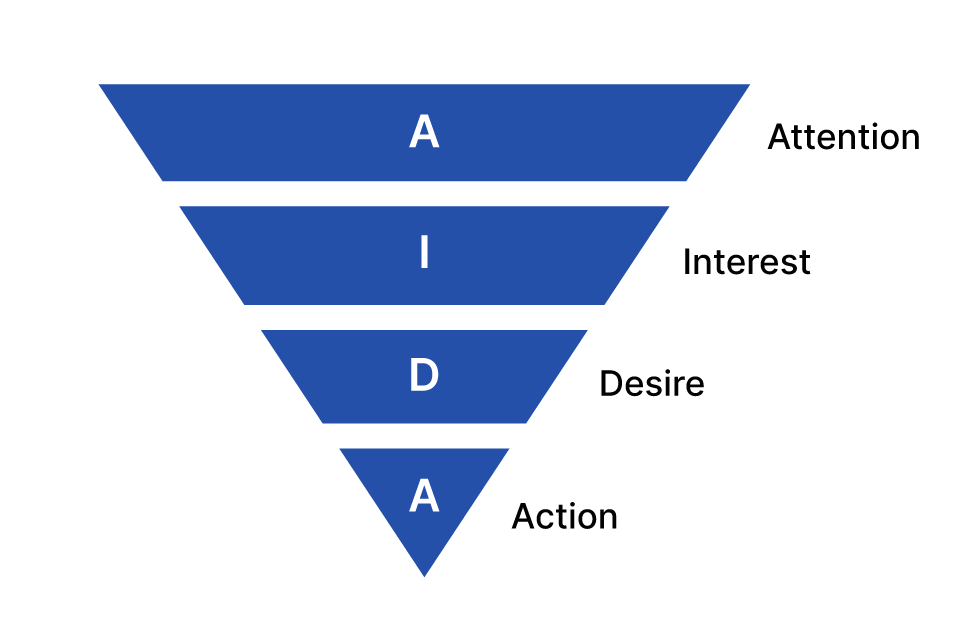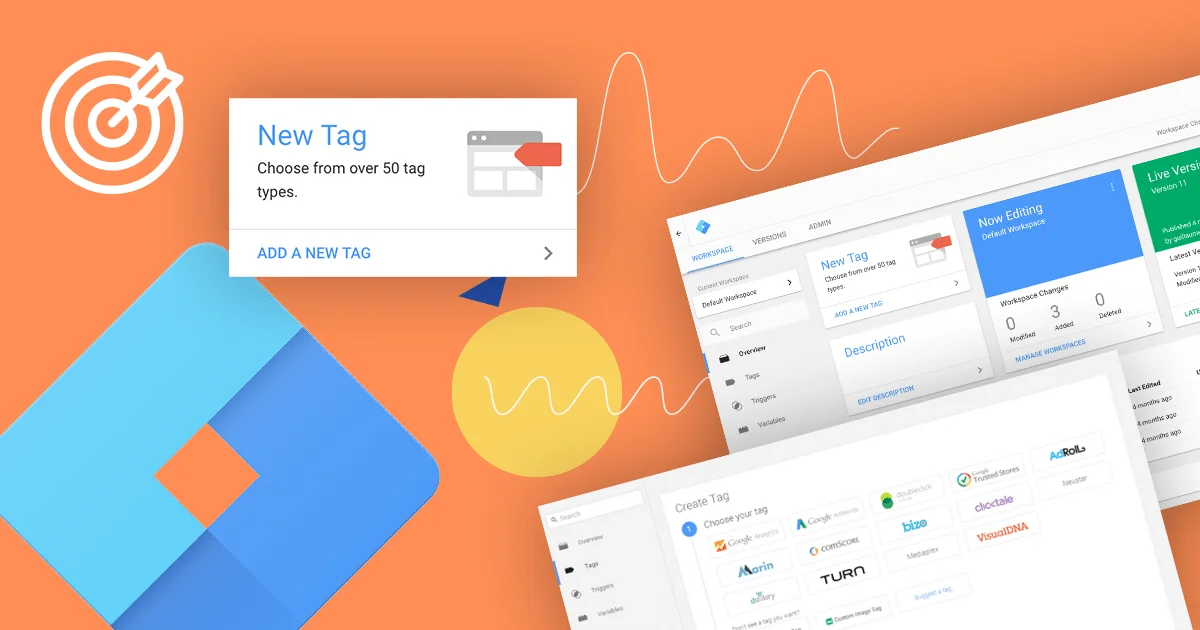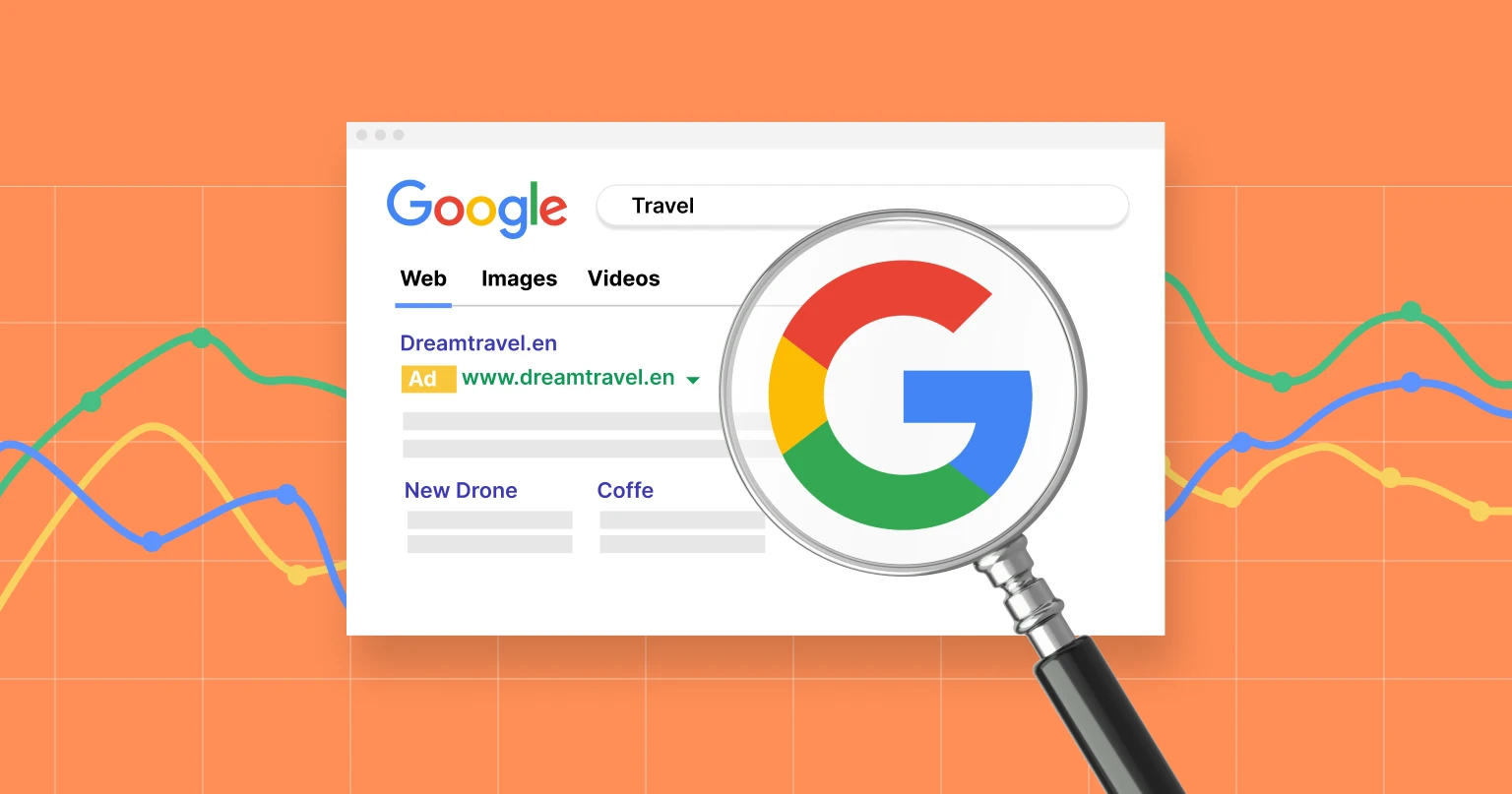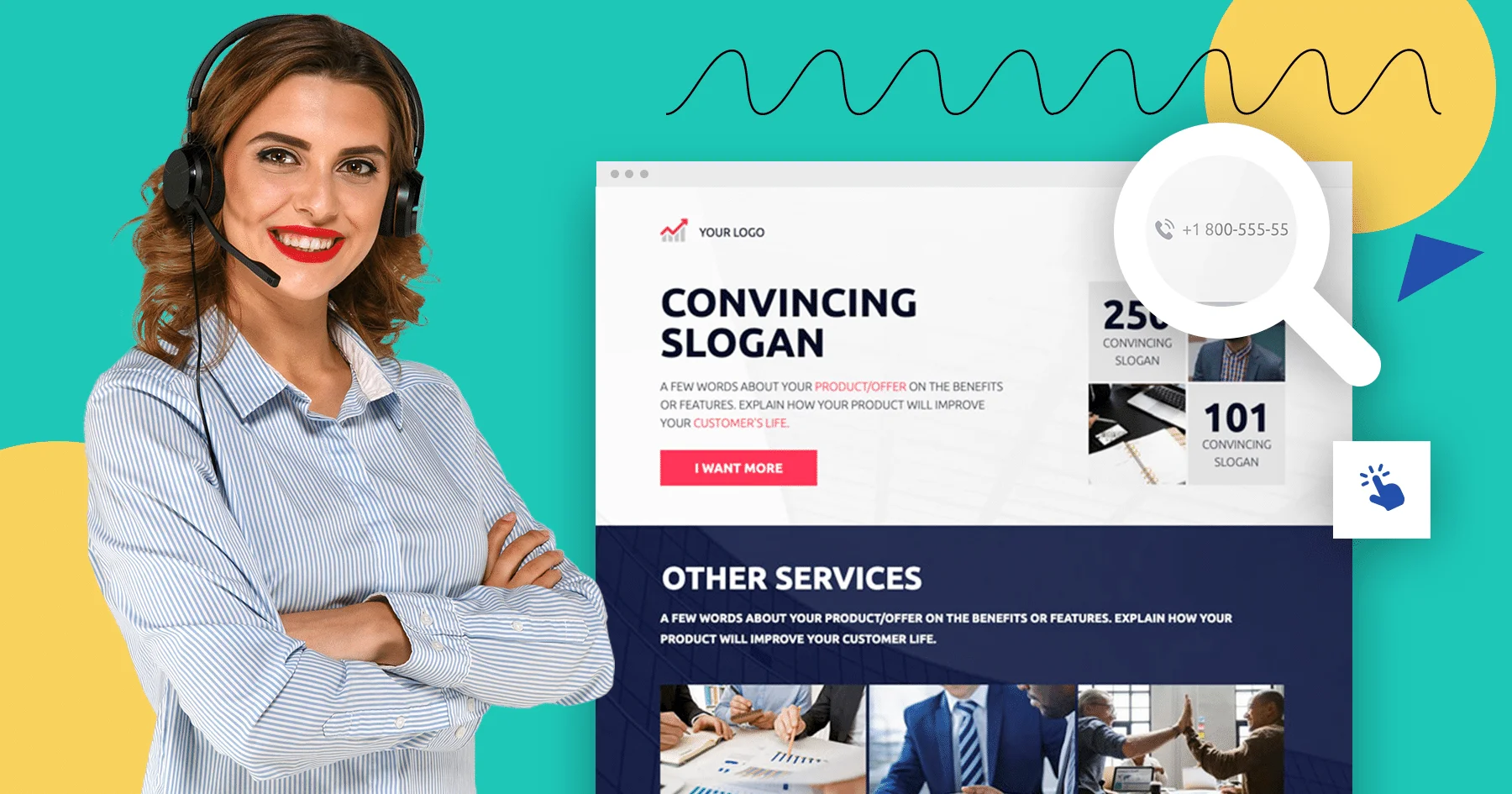The role of effective marketing is greater than ever before. Reaching audiences has never been easier, but this fact does not simplify marketers’ work.
In today’s world of information flow, it’s a challenge to grab somebody’s attention. What should you do to encourage your potential customers to stop on your ad?
We’ll walk you through using the AIDA model, which has been around for more than a century. Many people mistakenly think that traditional marketing methods no longer have a place in the world of digital transformation, but we’ll prove to you that the opposite is true.
The AIDA model
What is AIDA model? Let’s start with a bit of history. The AIDA approach is commonly associated with the American marketing pioneer, E. St. Elmo Lewis. In 1898, he outlined an idea that led to new marketing techniques such as the commonly used marketing funnel.
The AIDA model acronym stands for:
- #1 Attention (Awareness): The customer is informed that a product/service exists.
- #2 Interest: The customer actively expresses an interest in that product/service.
- #3 Desire: The customer wants to acquire the product/service.
- #4 Action: The customer makes a purchase.

The acronym AIDA was used for the first time in 1921. Interestingly, this acronym connects to the title of the classical opera Aida that consists of four acts just like the stages of the AIDA model marketing. Back then, opera was more popular, so people probably automatically associated these two terms. Hence the connection here is perhaps no coincidence.
How does AIDA work?
The AIDA model shows four steps that customers go through to make a purchase. Using this model, brands can figure out the best way to communicate with their target audience in each stage of the buyer’s journey.
In the years during which the AIDA model was developed, there weren’t many communication channels available. Today, however, with so much competition around, this technique is even more helpful to brands. They can stay focused on their primary goal and reach out to their audience even more effectively.
So use this model to help craft a communications plan tailored to your customers’ specific needs, depending on which stage of the journey they are currently at.
This formula helps you to bring people into the natural flow of being interested in something and leads them to the point of considering and eventually buying it.
How to integrate AIDA into your marketing strategy?
Step 1 / Attention
As is often said, the first impression can seal the deal. If the message does not distract customers from their current activities, they will be more likely to pass by without the action bringing the expected results of increasing brand awareness.
At this point, actual purchases don’t matter that much yet. Potential customers don’t know about the product, so you need to convince them that it’s worth their attention. The product must attract customers with, for example:
- an interesting advertisement,
- an image on your social media profile(s),
- a review by an influencer.
However, to get to this stage, you can’t just hope for a little luck until your brand gets noticed on its own. It’s much better to first reach out to the audience with your content (buyer personas will help you make marketing messages that appeal to them). To do so, make use of organic results from search engines or social media. This is only the beginning of the AIDA model marketing, so you should be able to reach every potential customer.
If you can get their attention, they’ll most likely want to know more about your business. And that’s how it works – by taking appropriate action, you encourage potential customers to go to the next step and move closer to purchasing.
Step 2 / Interest
Attracting attention is the first part, but the real challenge is maintaining it. You need to give your audience reasons to remain interested in your products.
It’s time to present more about a product and the benefits it can offer, e.g. by:
- adding a video to your website,
- focusing on your blog and SEO,
- creating a WordPress landing page dedicated to the product.
There are many options, so decide which will be best for your potential clients. At this point, the main goal is to transform interest into actively liking. Your content needs to be convincing enough to engage the audience.
Look at this AIDA model example: your target audience visits your website thanks to social media ads. Now, you need to provide an interesting solution for their problem in order to convince them even more to choose your product among the competition.
Many companies use storytelling for this purpose – people can identify with situations that make them desire to own your product. If you show them a video that has a pleasant reception, it can have a massive impact on their decision.
The purpose of the Interest stage is to create a deeper connection between your brand and potential customers so they feel that you speak directly to them.
Step 3 / Desire
This stage of the AIDA model marketing strategy is closely related to the previous one. It’s all about making your target audience want your product – they are getting more and more interested to the point of desiring ownership. Your audience should be able to see how your offer can make their lives better. It’s also a step to creating an emotional connection between potential customers and your brand. Share your tips and advice with them on your blog, and thus try to build a position of leadership in your industry. It all comes down to trust. They first have to have faith in your brand and truly believe that the products fulfills everything you promise, as well as resolving their problems.
How can you make them feel confident that buying your product will be the right choice? Continue to provide them with good content. Make sure that they, e.g.:
- subscribe to your social media accounts,
- receive personalized emails,
- download an ebook about your service.
If all of this is done effectively, your target audience will wish to buy your product.
Step 4 / Action
Your potential customer is just one step away from completing the desired action. As soon as they feel the desire to buy your product, you need to lead them directly to making a purchase. Your final job is to get them to take that action. The customer needs to understand what you want from them, so make sure there is a clear and straightforward call-to-action.
Think about which channels your customers prefer and which engage them most. What can you do to encourage prospective customers to take action?
- build a landing page with a sales-driven purpose (use a landing page creator for this),
- send an email with a CTA button,
- invite them to use a free trial.
Moreover, you should consider methods to speed up the decision-making process. Marketers like to increase their customers’ sense of urgency by extending an offer for a limited period only or including a bonus for those who act quickly.
No matter which method you choose, it is generally better to make the last step of the AIDA model marketing strategy as simple as possible. You need to act thoughtfully and quickly so that the customer finally makes a purchase rather than forgetting about your offer at the final hurdle.
AIDA model marketing today
The AIDA model has been proven to be a powerful technique for marketers. Even though it was developed over 100 years ago, it is still widely used in various forms.
However, today’s customers can be reached in totally different ways. For this reason, new approaches to the AIDA formula have been developed and are commonly used alongside their original version.
Some of those updated methods extend the original model to additional stages and take into account online channels like social media. Marketers also believe that AIDA should not end once the transaction is complete, since all post-purchase actions – including customer satisfaction, customer rating, and recommendations – can also have a significant impact on the overall relationship. There are two main stages to consider:
#Satisfaction:
This model extends the AIDA model by one stage – Satisfaction. After the sale, you want to be sure that your clients get the product delivered in good time. Ensure that they will be satisfied with the purchase and get their feedback – send surveys and ask them to rate the product or service. All these behaviors lead the customer to their next purchase and increase the chance of them choosing your brand again.
#Loyalty:
By adding this step to the AIDA model, you care about increasing customer loyalty by sending them to a thank-you page after they’ve made a purchase. It’s not very difficult to create such a page considering that landing page templates are readily available. Loyalty is built by regular interactions and personal attention, so make an effort to ensure that every customer feels special.
To sum up
Competition on the market has never been so fierce. It’s easy to get into business and promote it on the Internet. However, it’s worth keeping in mind that the online marketing industry’s strong competition means you need to do something more or have a unique selling point in order to stand out.
You need to thoroughly understand your prospective customers’ thinking and how they act at each stage of the buyer’s journey. Just like the AIDA model, traditional marketing methods are still a pattern for consumer behavior and work as a good aid for marketers.
Now you know what the AIDA model is and that it’s still in use, this timeless marketing technique can enhance your marketing strategy. It can be incredibly useful for creating content and driving your customers to successfully purchase.





